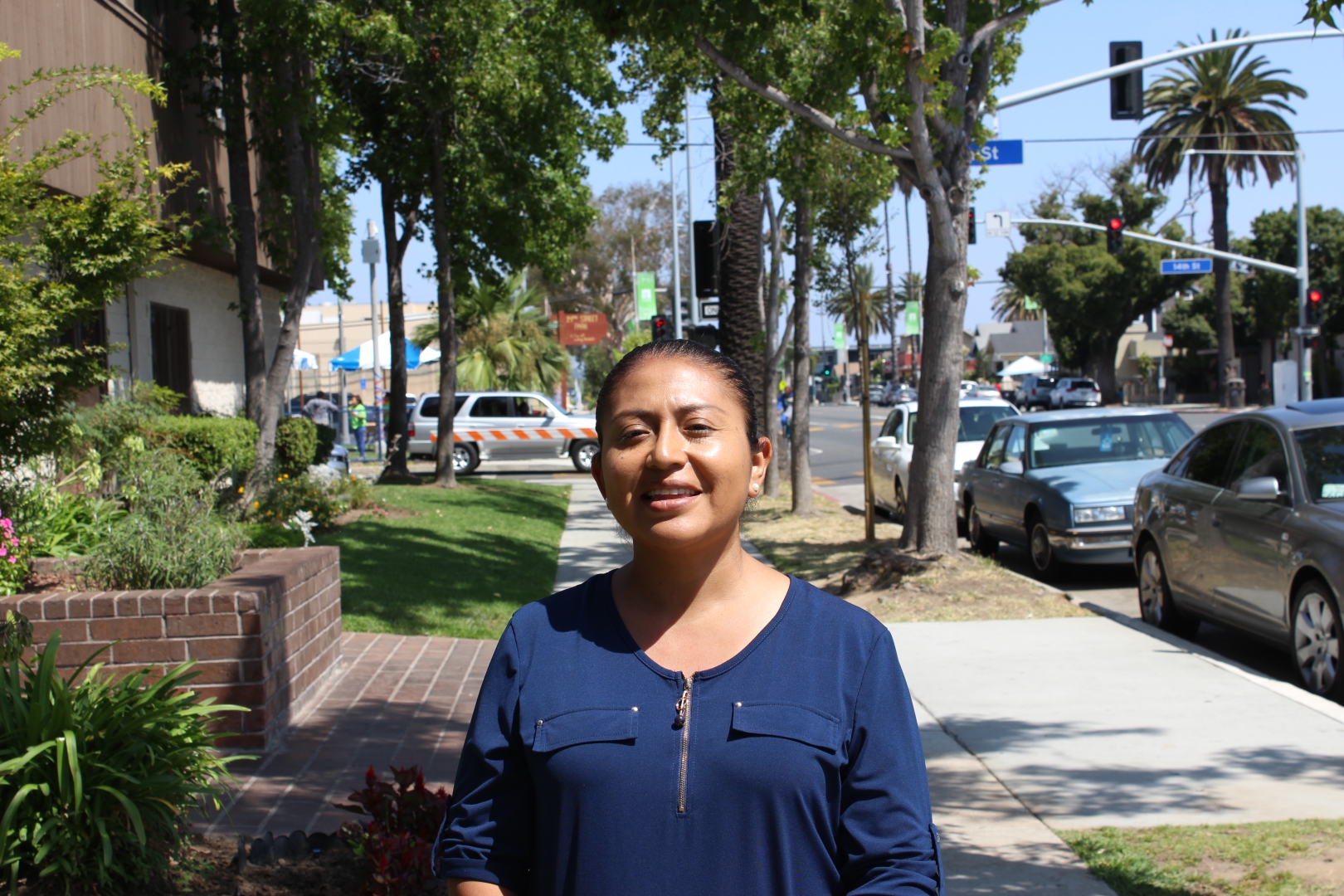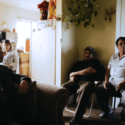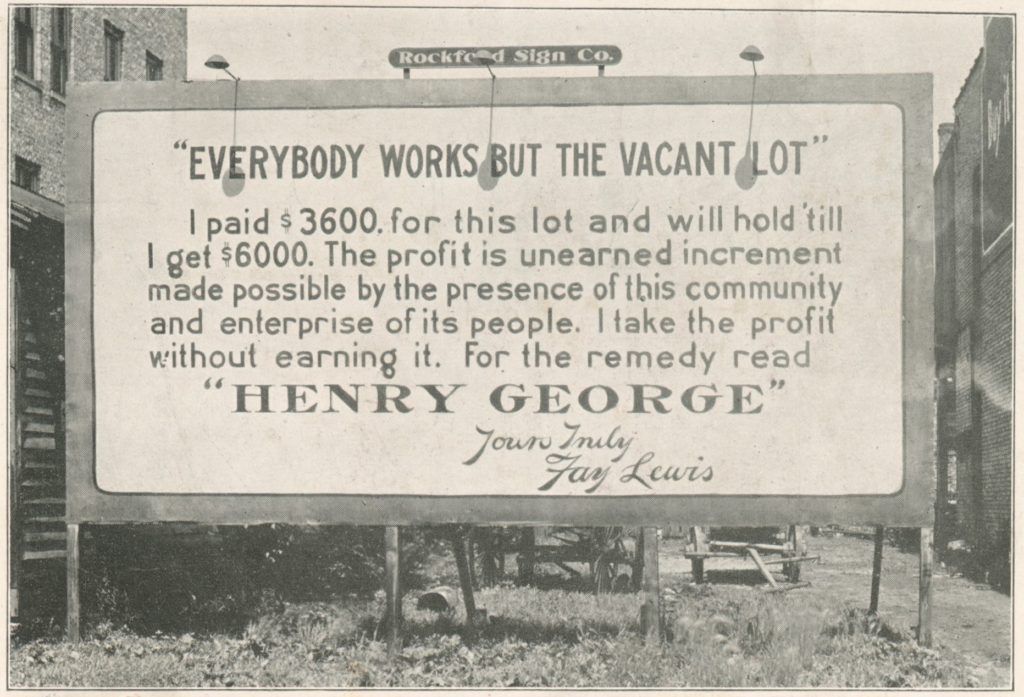Mariela Salgado: ‘My job is to serve the entire district, not just one area’
18 minute readLocation: Long Beach Rescue Mission and Michael K. Green Skate Park
Mariela Salgado is used to hard work. The mother of two came to the U.S. from Mexico when she was only a few years old. She was undocumented and calls herself “a Dreamer before there were Dreamers,” referring to undocumented persons who received temporary deportation protection under the Deferred Action for Childhood Arrivals (DACA) program.
As a child, she was accepted into a magnet program in the Los Angeles Unified School District that allowed her to attend elementary school in upscale Brentwood, far removed socially and economically from the predominantly Latinx immigrant neighborhood in West LA where she lived. She credits the experience with first exposing her to economic inequality, an issue she says greatly informs her run for the 1st District City Council seat.
After high school, Salgado went to community college where she worked multiple jobs while also attending classes full time. She eventually transferred and received a bachelor’s degree in business management before going to graduate school at Pepperdine University for business administration. She’s worked in both the private and nonprofit sectors and now owns and manages a well-reviewed residential cleaning service in Signal Hill with her husband.
Her work ethic has served her well in this race. Salgado, who has lived in the Willmore neighborhood for 10 years, likes to call herself “the community candidate,” drawing a distinction with opponents more closely tied to elite circles in the city, who have secured more high-profile endorsements and contributions.
Salgado, who’s lived in Downtown for 10 years, says it’s important the seat go to someone who has a real track record of community involvement.
“(Historically,) you have people who, because of low voter turnout, can technically move in and, with sufficient funds and endorsements, will take the seat,” she said while walking down Anaheim Boulevard towards Long Beach Boulevard. “For me, at this juncture, I (think) we really need a strong voice.”
Salgado was appointed to the Parks and Recreation Commission by former 1st District Councilmember Lena Gonzalez, where she sits on the Marketing and Recreation Committee and chairs the Park Usage and Regulations Committee. According to Salgado, she’s the first person in decades to represent the the 1st District on the commission. The experience has given her a first-hand look at the stark imbalance of green space and programming between the district and more affluent parts of the city.
“I took it upon myself to go through the Hundred Days of Summer,” said Salgado, referring to an event series in parks around the city. “(I) realized that we had maybe like 7% of the entire programming for the whole city … (I) just couldn’t understand why. Our kids desperately need (this) in our neighborhoods.”
She says one of her top priorities, if elected, will be prioritizing the completion of the Drake-Chavez Park Master Plan, which was adopted in 2010 and calls for a 57-acre greenbelt along the lower Los Angeles River. Last year, a part of that plan came to fruition, with a greenbelt linking Drake Park, Cesar E. Chavez Park, and Loma Vista Park in the Willmore neighborhood; but adjacent projects like a realignment of Interstate 710 and a stormwater treatment plant have interfered with the plan. Currently, the neighborhoods surrounding Cesar E. Chavez Park and Drake Park have 1.65 and 1.98 park acres per thousand residents, respectively, well under the goal of 8 park acres per 1,000 residents set by the city in 2003. Earlier this year, the city finally passed a resolution to bring the project to a close with the hopes of receiving support from a state grant targeting park-poor neighborhoods.
The project ties into many of the concerns and values of Salgado’s candidacy: public safety, health, environmental justice, economic inclusion, and early childhood development are all connected to the availability of green space, she says.
“There’s a correlation between what we’re doing in investing in our neighborhoods, and the crimes that are occurring,” said Salgado. “We’re only looking at adding more police officers. What are we doing to invest in the neighborhood, so that we’re changing the actual dynamics of the neighborhoods?”
At a July 16 City Council meeting where the renewed Drake-Chavez vision document was approved, Salgado drew the lines even bolder:
“We know the importance of early education, parks programming, arts and music in (their) proven effect at reducing negative health impacts (and) crime, and (their) ability to stimulate growth. Children most in need of arts and music instruction have been the least likely to have access to it … Those in low-income communities have less access to high-quality childcare and public spaces, including green space.”
Salgado is something of a centrist politically, though open about her party registration as a Democrat in this nonpartisan race.
A “moderate” on some issues and “progressive” on others, she says. A “fiscal conservative” that also believes in “economic inclusion.” She highlights the issues heavily associated with left-leaning Democrats, like the environment and wealth disparity, but also uses the more conservative language of “serving the taxpayer.”
When discussing the gentrification of Downtown Long Beach, she expresses deep concern about the displacement it caused: “We can’t be the ones to take it on, build luxury rentals, and then somehow expect that our neighbors or friends and families don’t get impacted.”
On the topic of a renter relocation assistance ordinance passed earlier this year, which will force landlords to pay tenants who have to move due to a large rent increase or no-cause eviction, Salgado wanted to go one step further and institute a rent freeze while the ordinance was being crafted. This, she says, would have stopped rent-hikes issued in anticipation of the new law.
This stance puts her at odds with the positions of the Apartment Association, California Southern Cities (AACSC), an organization she claims membership to on her campaign website. Their website likens relocation assistance to “involuntary re-distribution of wealth from housing providers to tenants.” She says that she is no longer a member of the organization and that she joined in order to build contacts for her business. She does not support strict rent control, however, favoring rent stabilization and increased housing production. Though it should be noted, California laws like Costa-Hawkins and the Ellis Act limit the the reach of local rent control laws.
When discussing the awarding of city contracts, she’s critical of contingency clauses, which she views as wasteful government spending: “This money is approved, plus an extra million dollars. It’s almost like giving a contract with the allowance to spend that extra million dollars from the taxpayer. So, for me, it’s very important that when we’re spending our money … (that it is) very, very responsibly.” She often calls for good stewardship of taxpayers’ dollars.
As we walk the outer edge of the Washington neighborhood during our interview, the changing nature of the 1st District becomes obvious. Older rental units are being joined by new construction a few blocks away. Mom-and-pop businesses now neighbor a new craft brewery and rock-climbing gym.
While she sees Downtown get most of the attention, she points out that the zip codes on the northern side of the district represent a higher percentage of residents.
“My job is to serve the entire district, not just one area,” said Salgado. “I wanted to show you what most people don’t see … I spoke to a voter just yesterday and he said, ‘I know not to go past Seventh Street.’ Or people will say, ‘Don’t buy north of Seventh Street.’ I think, wherever you land on the income level, you’re just as important.’”
Here’s Salgado:
There are serious health disparities between this district and other parts of the city. A big part of that is due to pollution. Are there any policies you’re excited to expand upon or bring to City Council that would help improve the air quality?
Well, you can certainly plant more trees … It should be something we should be proactively doing—as a council person, as a city. So what I see, oftentimes, is you have to get the permit, you have to get the trees, you have to get somebody to fund-raise or something. That’s, you’re adding levels of work …. Another thing is, like, for instance, the school district gave air filters to Edison (Elementary School), but only when it’s applied for as a grant; that’s something that should be on Port of Long Beach’s to-do list … My air filters in my house have to get switched every few months. That’s something that should be done continuously … So I will definitely be looking to find ways to move us into the future.
Homelessness is a pretty big issue facing the 1st district. What are some of the solutions that you think can help alleviate homelessness in the city?
Tomisin Oluwole
Dine with Me, 2022
Acrylic on canvas
36 x 24 inches
Click here to check out our interview with Tomisin Oluwole, a literary and visual artist based in Long Beach.

Instead of gunking up our site with ads, we use this space to display and promote the work of local artists.
It’s a statewide issue. This is not just a Long Beach issue. Well, I think we do our best to stay ahead of it. One of the things that I found remarkable was the last homeless count: 52% of those that were counted were experiencing homelessness for the first time. So that lends itself to say, what is it that we’re doing that has displaced people? So I’d like to look at it from a deeper perspective in terms of the displacement. Finding the supportive services for those people that are being displaced, so that we avoid them having to go through long periods of experiencing homelessness … From a taxpayers perspective, it costs us more to keep them out in the streets without a shelter than it does to just find them a home … I would think most reasonable individuals would say let’s find a way to home as many as we can. So there’s supportive housing, there’s bridge housing. So looking at those kinds of things. Finding those funds and prioritizing for those that need (them)—I think, from an outsider perspective, there’s some projects that are being done in the city that I think we really have to have some tough conversation about is that really a priority? Or is it more priority to house the people that are living in our city that are being displaced by some of the development?
The city is in the process of developing an inclusionary zoning policy. In general, are you in favor of such policies?
We’re 10 years too late at minimum, so these tough conversations have to happen … So inclusionary zoning, I definitely think is something on my priority (list). And I want to make sure that we are building responsibly, and that we’re trying to find ways to give people opportunity … One of the things I’m not in favor of is having low-income housing only in one particular area … You want to talk about celebrating the diversity? It should be everywhere.
State law went into effect this year that raised the cap on what cities can charge for fines associated with building code violations—amounts that haven’t been adjusted in over three decades. The 1st District contains some of the oldest housing in the city and tenant advocates say raising those fines would help crack down on unhealthy housing conditions. Where do you stand on this?
We have a lot of slumlords in our district. I think the conversation is very different between, let’s say, the Bixby Knolls area than here. So in this district, just as a neighbor and active resident, and so on, we do have a lot of code enforcement issues. And I think, when we choose not to address them, we’re basically closing our eyes and ears to what’s happening. There is a bit of a covenant, I would say, between renters and owners sometimes where they, they try not to raise the flag about issues in the property so that their rents don’t get raised … And I think the city needs to be proactive in terms of those code enforcement issues … So for me, it’s very important that I’m looking at ways to add resources to that, because it lends itself to a predatory relationship. So I’d like to see some more teeth in (enforcement).
The district has had very low voter turnout in previous City Council elections. What are you doing now and what would you do if elected to increase voter engagement and increase turnout?
A lot of families, they’re accessing the parks. There’s, I think, a lot of opportunity, whether it’s in collaboration with the schools or the parks or different organizations to constantly have that voter registration, someone who is trained or who has gone through the process; who speaks the language, looks like them. People are more, usually more receptive to someone like that. This is one of the reasons why in this special election, you have eight of us running, because I think it lends itself to people who think that they can come in and take the seat. You have a very low voter turnout … I think it’s really important that we engage the community and have them have input. And I don’t just see it here as a district, but I see it in our school district, I see it in projects and parks commission and all the commissions. You have you have organizations like Long Beach Forward organizing parents, and a lot of people don’t really know, they don’t know what’s happening. They don’t know (of the) the decisions that are being made for them. And I don’t think that the squeaky wheel should be the only one that should have a voice. So for me, it’s very important that I win the seat, that I’m finding the team to serve and find proactive ways to keep engagement and keep voters present.
Do you support the upcoming ballot measure to make the Measure A sales tax permanent?
Do I support that it go to the voter in this upcoming election? I think it’s too early. It’s only been—we’ve only seen the revenues for two years. So the idea of having to ask for it in perpetuity, not even just for an extension, extended five years, I’m weary about that. As a taxpayer, I think that we should be looking at how do we find efficiencies as opposed to looking quickly to ask the taxpayer for more.
Is your campaign taking corporate contributions?
If the question is, “Am I proactively looking for corporations to fund me?”, (the answer is) no. I’m the community-based candidate. All of the associations here know me and are in support. So for me, I’m funded by community and funded by small business.
Would you be in favor of reforming officeholder accounts or even abolishing them?
I think there’s definitely a need for reform. The city of Seattle has the public vouchers. I think we’ve gotten away from what public service looks like … We have such low voter turnout historically and if you do some homework, you go back a few elections, and a few of those that have served, have used this as a stepping stone to the next one, or moved in who can take on that seat with just a little bit of money and power. So, I think that we should be looking to finding ways of leveling the playing field to ensure that we are getting people who are looking to serve the constituents (and) not those of importance … It’s the People’s Choice. It should be the People’s Choice. It should not be influenced by, especially by the mayor (or) by any other candidate.
How would you assess State Senator Lena Gonzales’s tenure as the 1st District Councilmember?
I mean, I’m a supporter of Lena Gonzalez. I think she, like myself, we both have master’s degrees. I know she worked also in the private sector. Again, this is outsider in, and once I’m in it, I’m going to be open for for people to have their opinions about the work I do. But I think there was some missed opportunities about understanding each of the neighborhoods more. Because when I look at now, like I said earlier, 85% of new development happened in our 1st District. Were we looking to ensure that we were doing it responsibly? What were the impacts of that those developments we’re working on?
How would you reduce crime in the district?
Support community policing. In sum invest in community and people. Our neighborhood associations and community partners are at the front lines of change and I want to make sure we sustain their efforts and empower our communities. I’d like to add more funding to early education, youth workforce development, parks, (the) Youth Fund, develop mentorship programs and restore the Police Athletics League. There is more opportunity in preventative measures and education. I want to shift our efforts to invest in our youth and our communities.
Do you think police transparency is an issue for the city? If so, what would you do to address it were you to be elected?
I think there is a bit of lack of transparency and accountability, otherwise, we wouldn’t be here. But I also think the job of an officer, it’s very difficult. I went on a ride along. I think I was the only one that’s gone on a ride along and I have a lot of respect for the work they do. I have never feared for my life like I did that day … You talked about the TigerText. I think that made it difficult for people to trust what’s happening behind closed doors. And so you have to have honest conversations about that, too.
Some law enforcement agencies in Southern California have encrypted some or all of their police radio traffic, making it inaccessible to the public, including to reporters. The Long Beach Police Department maintains its public channels, but last year bought equipment that allows them to encrypt the signals. Would you support a move toward encryption?
It’s another expenditure that for me, again, (it’s a) question of priority could we be doing more by investing in our community so that kids have something to do.
Do you think there should be more bike lanes in the district?
I don’t know if there’s a lot of ridership. But I think everyone deserves safe streets. So sometimes I think as a policymaker, you’re also looking at what the future will look like, and what you want to maybe direct behavior towards. I see Daisy (Avenue). I personally like it. But again, it’s this conversation of priority: Is that a priority over building housing? Is that a priority over ensuring that we don’t have homeless encampments everywhere? I don’t know that I would put the bike lane as a priority in my list, because of what I see here in the 1st District.
Would you support increasing funding for youth programming in the city?
You have 70 cents of every dollar, as I understand, going into public safety. We’re only looking at—I think I talked about it in the forum—adding more police officers. What are we doing to actually invest in the neighborhood so that we’re changing the actual dynamics of the neighborhoods, we’re building community? … It’s that sort of proactive approach that I want to look at and ensuring that we’re funding those proactive-approach preventative measures, as opposed to just the consequences, the outcomes.
How would you make the city more accessible for people with disabilities?
The City of Long Beach was sued a few years ago and settled the lawsuit. In response, the city developed an (Americans with Disabilities Act) Transition Plan. In sum, we’re going to prioritize and create an action plan to ensure our curbs and sidewalks are ADA compliant. This is already in the works … Long Beach has two growing populations: seniors and those with disabilities, including students with (Individualized Education Programs). We need to keep in mind these populations for new development so they age in place, where possible, and have access to housing opportunities which meet their needs. Secondly, that we provide transportation accessible to them. For example, the Long Beach Transit FREE passport in Downtown was rerouted recently and completely disregarded the impact it had on our seniors and those with disabilities in our Downtown area. Without transportation they can’t access groceries, recreational activities, etc. and that’s important. Lastly, there is opportunity to work in partnership with other city agencies, businesses, and organizations to facilitate and improve access and opportunity for these populations and intend to this work. Being involved in our district is crucial in prioritizing and enhancing quality-of-life issues of our residents and most vulnerable.


 joe@forthe.org
joe@forthe.org




